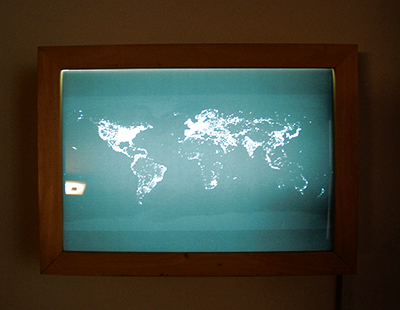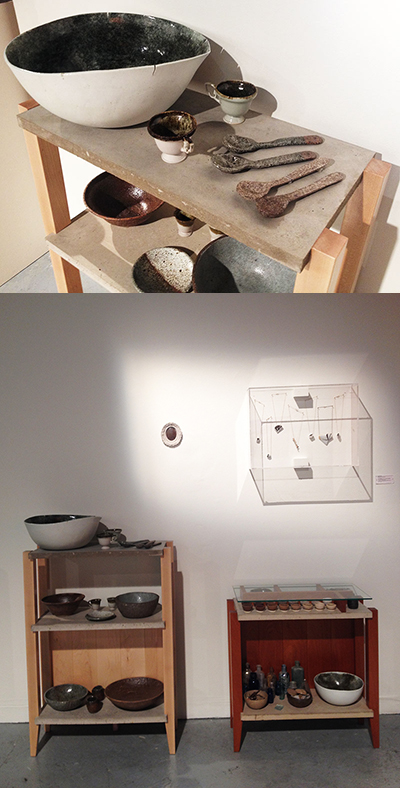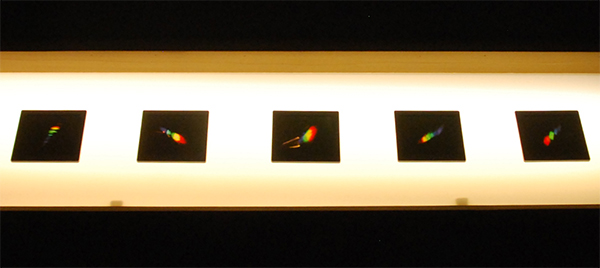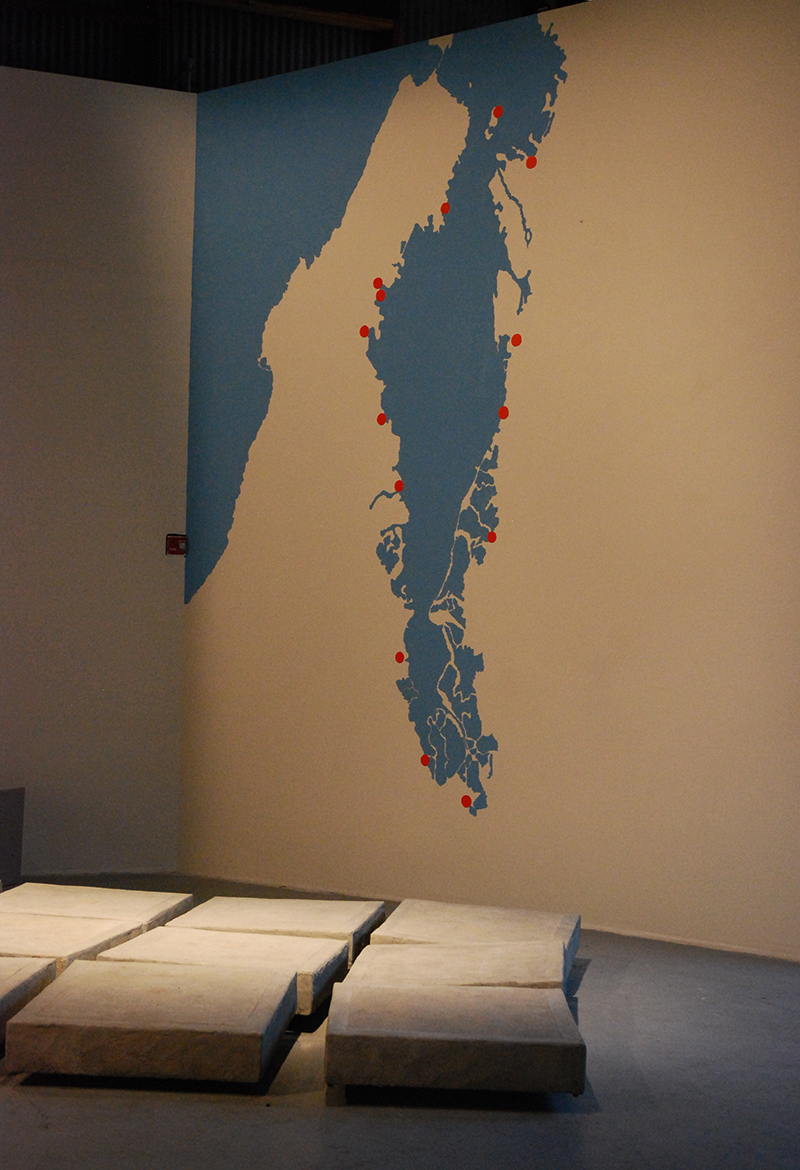Hidden Cities: Experiment and Explorations
a review of Hidden Cities Exhibition at SOMArts, San Francisco
By Emma Drew

Cities and artists have been feeding off each other since the first Greek sculptor moved into a dingy studio in Athens’ warehouse district to pursue his artistic dreams. Terrible jokes aside, cities provide endless material for artistic endeavor--big dreams and hard knocks, the sensory EVERYTHING--and artists keep cities vibrant and pulsating. For the past four weeks at San Francisco’s SOMArts Cultural Center, “Hidden Cities: Experiment and Explorations”, a multi-artist, multi-discplinary show curated by Pireeni Sundaralingam as part of the institution’s Commons Curatorial Residency, has sought to explore that relationship, and moreover that of a city and all of its inhabitants. The goal of the show is to heighten our attention, reveal the neglected, and give voice to the unheard, tall orders no matter the circumstance. If the act of making visible the invisible is meant to be transformative, as “spring-boarding our consciousness” would suggest, the resulting pieces are revealing, if not revelatory.

The difficulty in basing an artwork, or a show, around the nominally unseen or overlooked is finding those objects and experiences that are neglected but remain ubiquitous, that go unnoticed, but are ultimately overexposed, that have become perfunctorily mundane, to the point of obsolescence within our consciousness. Those dichotomies, our resistance to their careful examination of the most obvious for whatever reason, allow for personal resonance. While garbage disposal, sewer treatment plants, indoor plumbing, and technology are completely necessary to the development of cities—all addressed in the show and all required almost by definition of a city--they are things whose presence we have adapted to and seamlessly integrated into our lives. But those are systems and I want to rediscover the fundamentals. Sundaralingam believes the city needs to be experienced in a new way—and I'd argue not beautifully photographed or artfully arranged and cleverly presented, but physically reinterpreted and redesigned. Three pieces accomplished this, for me, and all focused on some of the most basic, elemental components of the city: dirt, light, and sidewalks.

The largest work in terms of holistic ambition is Ilana Crispi's “Tenderloin Dirt Harvest”, a meditation on and re appropriation of the the earth, the soil, the actual dirt that makes up the Tenderloin. Working as a teaching artist near Boedekker Park, Crispi was partially struck by the fact that for a neighborhood so universally deemed “dirty”, there was very little actual dirt to be found. She became concerned with the value we ascribe to physical places, and how fleeting and transitory those associations are compared to the place itself. In an attempt to reclaim the land, amidst the development and despite the traumas it has seen and sourcing her materials from the park during a construction project, Crispi produced a series of ceramic bowls, utensils, cups, and other vessels, jewelry, and benches, the clay and glazes made from Tenderloin dirt. The objects are beautiful, and I couldn't help thinking a little about how at home they'd look in the shops that line Valencia Street and Hayes Valley; whether their origins would add to their cache or more simply silently make a mockery of their consumers, I can't say. Visitors are also invited to make tea with herbs and honey grown in the Tenderloin, using the Tenderloin cups, a nice ritual that perhaps is most helpful in the moment it provides for reflection. More than focus attention on the potential or even inherent beauty of a neighborhood as marginalized as the TL (which doesn’t seem to be at the core of Crispi's mission), “Dirt Harvest” challenges more generally and more profoundly how we value and use a place, how “we are told what land is worthy of our gaze” (from the artist's statement”), and how those systems can be subverted, literally unearthing that which was already there.

Cristina Seely has spent years photographing city lights, documenting twilight cityscapes and nocturnal skylines. Her images are almost iconic but remind us of the more of the overwhelming presence of illuminated corners, streets, and structures, and their anonymizing, blanketing effect on our visual landscape (described as a “carapace” in the exhibition text.) In her spectrograph slide images of San Francisco landmarks—the Cliff House, Coit Tower, both Bridges-- are reduced to their wavelengths on the visual spectrum, divided into totally abstracted but information-laden ROYGBIV squiggles. The places we know so well are render illegible to the naked eye and yet are perhaps are a more accurate visual representation that any other medium could capture. They are translated into another language, one of frequencies and sinusoidal waves; Seely transcribes the San Francisco essentials via their elemental realities, elements now reconstituted and reordered.

The ability to reinterpret the physical city unleashes a wholelotta wonder, and I think it's that sense of marvel at such a transformation is what works best in a show dedicated to the very feeling of discovery and exploration. “Obstacles” creates a similar sense of delight, manipulating a facet of city life that, I would argue, is just as elemental and mundane as dirt and light, the sidewalk. Anja Ulfelt's installation consists of 15 sidewalk squares, slightly separated and very unsteady, that are designed to be walked across and about, though not without some missteps. Wobbly and responsive, the individual blocks shift and dip at each step, creaking and groaning as you go; it is a destabilizing experience. Of all those included, Ulfelt's installation requires the most acute awareness, our most heightens attention. An everyday action becomes suddenly precarious but also kinda fun: losing your balance doesn't happen all that often, akin to the sensation of getting lost, and the experience is humbling but playful. It's reminiscent of childhood, the whimsy and uncertainty all rolled together into a game suddenly created out of nothing.
At a small panel discussion earlier this month, Sundaralingam and two artists independent of the show, John Bela, the man behind the parklet, and Kim Epifano, founder and director of Epiphany Productions, focused spontaneously on the value systems that come to be, the values we ascribe to certain things. It's clear that for Sundaralingam these acts of hierarchization leads to obstruction or worse, and hence the need for a series of work dedicated to “seeking out the hidden and unseen in San Francisco.” However, on my own I struggled to see how the pieces, the show itself specifically reflected and reinterpreted the realities, hidden or not, of contemporary SF; at times the images and data points, even though they were obviously generated here, felt too universal, too anywhere. It was during this panel that some of the particularities and peculiarities better came to light: more than its ethos and attitudes, so much of San Francisco's urbanism is contingent on our peripheral status, on the experience of living on the edge (as Bela perfectly put it.) Ultimately, it's the constraints of physical geography, of shared resources, of civilization, that make cities seem so improbable and our efforts to defy them (17,620 people per mile, really, SF?) both ridiculous and encouraging. Or, as the inimitable “voice and conscious” San Francisco, Herb Caen, noted, “A city is a crazy concrete jungle whose people at the end of each day somehow make a small step ahead against terrible odds.” Sundaralingam sees all of these efforts as a testament to human problem-solving and creativity, the true values at the core of her work and of “Hidden Cities.”
Emma Drew is a museum educator and server living in San Francisco. She graduated from Wesleyan University in 2010, where she studied European philosophyand literature and wrote a graphic novella about the Dust Bowl.
